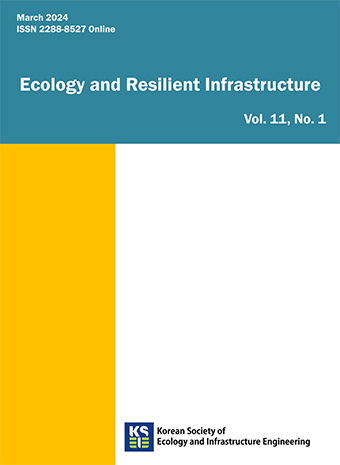Original Article
Abstract
References
Information
Corenblit, D., Baas, A., Balke, T., Bouma, T., Fromard, F., Garófano-Gómez, V., González, E., Julien, F., Kim, D., Bambs, L., Stallins, A., Steiger, J., Tabacchi, E. and Walcker, R. 2015. Engineer pioneer plants respond to and affect geomorphic constraints similarly along water- terrestrial interfaces world-wide. Global Ecology and Biogeography 24: 1363-1376.
10.1111/geb.12373Kamada, M., Woo, H.and Takemon, Y. 2004. Ecological engineering for restoring river ecosystems in Japan and Korea. In, Hong, S.K., Lee, J.A., Ihm, B.-S., Farina, A., Son, Y., Kim, E.-S., and Choe, J.C., Ecological Issues in a Changing World. Springer, Dordrecht, the Netherlands. pp. 337-353.
10.1007/978-1-4020-2689-8_21- Publisher :Korean Society of Ecology and Infrastructure Engineering
- Publisher(Ko) :응용생태공학회
- Journal Title :Ecology and Resilient Infrastructure
- Journal Title(Ko) :응용생태공학회 논문집
- Volume : 7
- No :1
- Pages :1-14
- Received Date : 2019-11-11
- Revised Date : 2019-12-24
- Accepted Date : 2020-01-22
- DOI :https://doi.org/10.17820/eri.2020.7.1.001




 Ecology and Resilient Infrastructure
Ecology and Resilient Infrastructure







